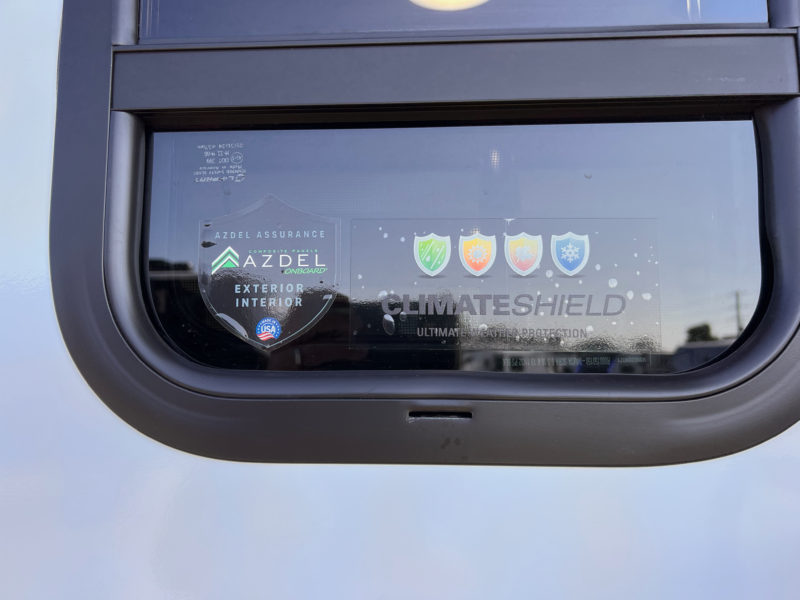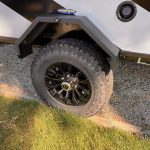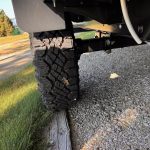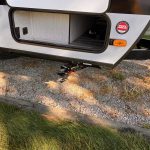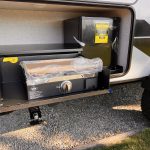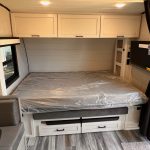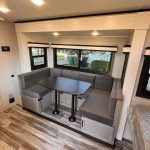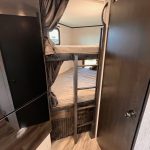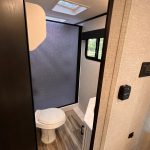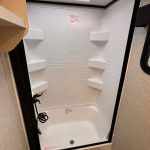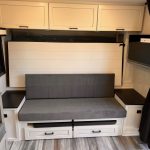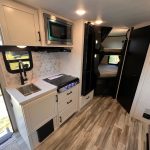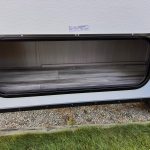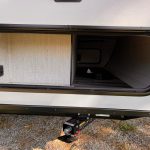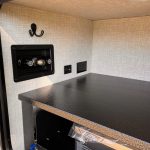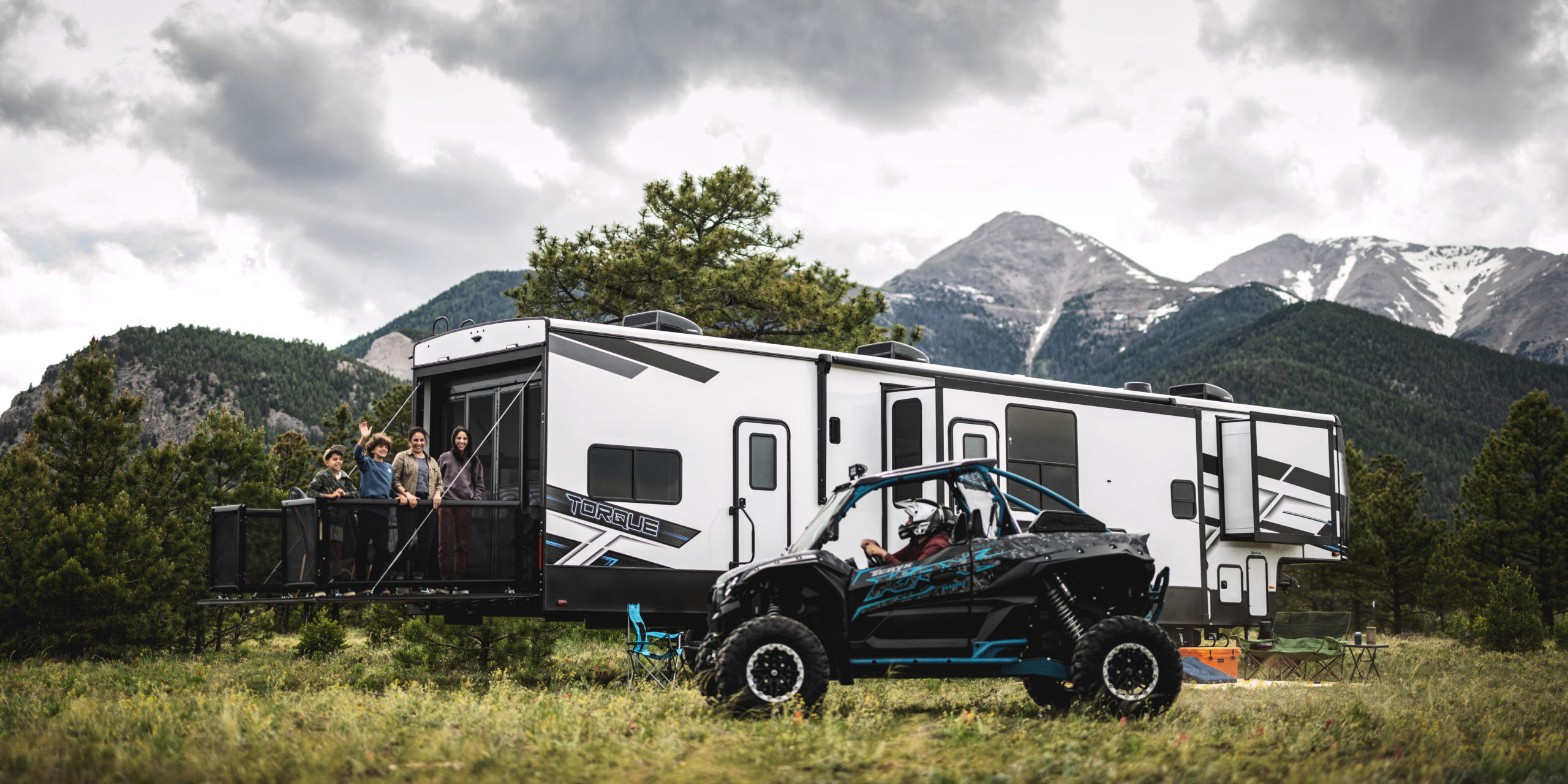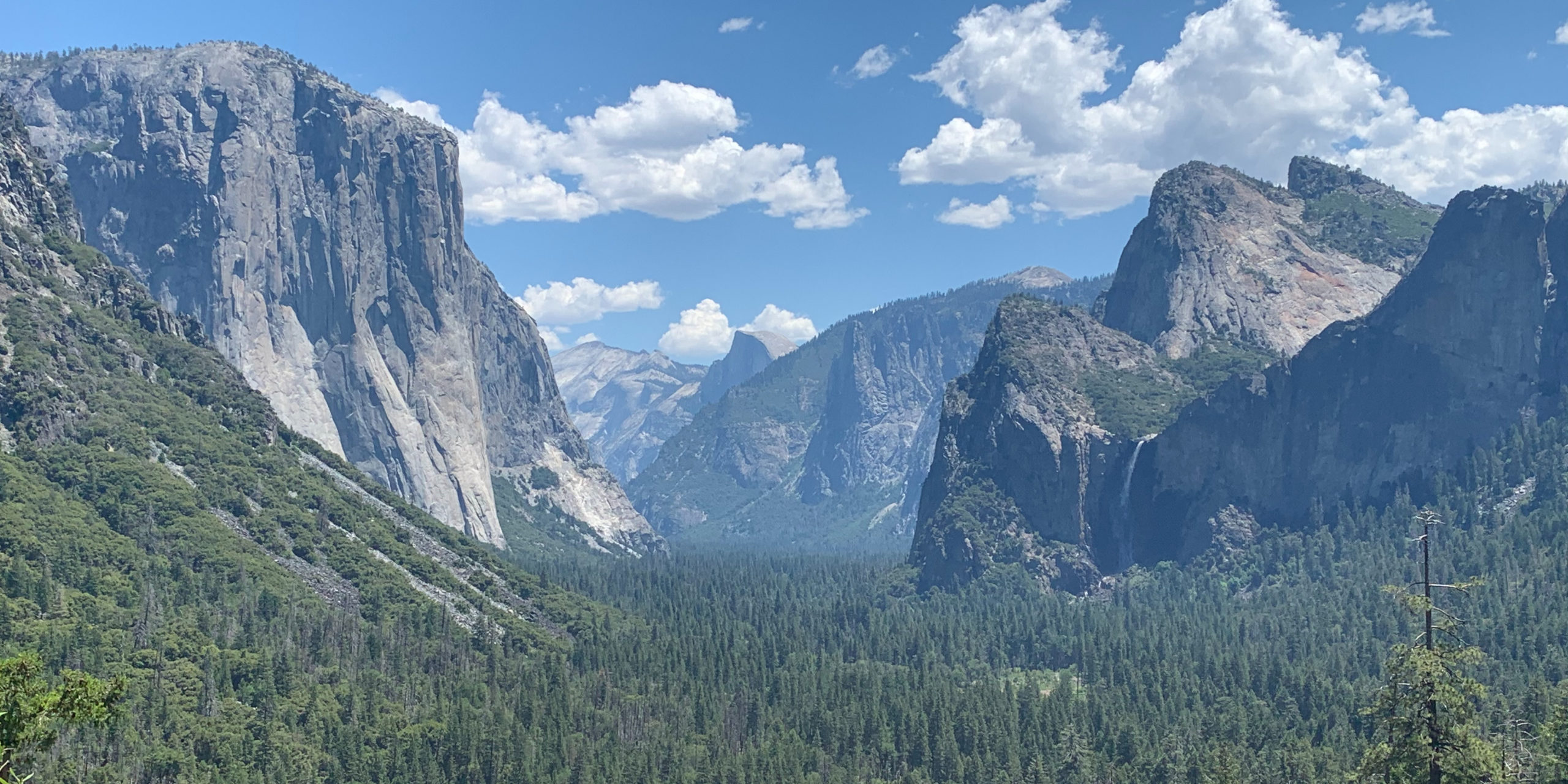The days of storing your RV for the winter season could soon be over. These days nearly all RVs are designed for year-round use. That means that whether you’re planning a winter RV trip to warmer temperatures or just heading up to the local ski hill, your RV can provide you with a comfortable living space when you get there. But regardless of where you’re headed on your winter travels, weatherproofing your RV is a must to ensure your arrive safely to your destination. (And stay warm after you get there.)
In addition to keeping your rig warm and cozy, weatherproofing your RV involves keeping plumbing lines flowing and engines and generators running. In this guide, we’ll share everything you need to know about weatherproofing your RV for winter travel.
Getting Your RV Fit for Winter Travel
Knock out manufacturer-recommended RV maintenance tasks.
If you’ve been doing manufacturer-recommended maintenance on your RV, getting it ready for winter travels will be a piece of cake. However, if you’ve skipped some of the recommended maintenance tasks (like many of us), you’ll want to catch up with these before you subject your RV to a winter road trip. This is especially true when it comes to the various components of your RV wheels, including the tires, and wheel bearings. After all, there are few things worse than having a tire blowout or having a wheel fall off on a frozen highway.
Warm up your engine oil with a block heater.
A block heater can protect your engine from sub-freezing temperatures that cause engine oil to thicken and diesel fuel to gel. Either of these conditions are hard on engine components and can make it difficult — or impossible — to start your RV. An engine block heater is strongly recommended if you plan to travel where winter temperatures fall below negative five degrees Fahrenheit on a regular basis.
It’s a good idea to outfit your RV generator with a block heater too. (Especially if it’s exposed to temperatures of less than 60 degree Fahrenheit.) This will help make it last longer and make it much easier to start.
Engine block heater components are fairly simple. They consist of a small heating element and a power cord. Pretty simple. Many late model RVs already have a block heater installed and only need the power cord hooked up.
Get better control with snow tires and tire chains.
Ice, snow, and black ice can create hazardous winter driving conditions. Having good snow tires can make the difference between staying in control on the road and being in an accident. Snow tires are designed to give you traction on the road. Aside from having an aggressive tread pattern that sheds debris and water, good snow tires are made of a pliable rubber compound that resists freezing temperatures. Snow tires have an “Alpine” symbol with a mountain and a snowflake that makes them easy to identify.
It goes without saying that snow tires should be used on your tow vehicle. (That’s obvious, right?) However, having them on your trailer or fifth wheel is also essential. After all, if your trailer wheels slide sideways, it can wreak havoc with tow vehicle handling. On top of that, it could create a hazardous situation. In the cold, no less. That could really spoil your day.
When Snow Tires Aren’t Enough
Driving in heavy snow, especially if it’s in a mountain pass, demands even more traction than snow tires can offer. This is where tire chains come in handy. These can be very useful when you’re traveling through mountain passes that can be very rapidly covered in inches of snow. Aside from that, the majority of jurisdictions with mountains have laws that make it mandatory for vehicles to carry tire chains.
Tire chains are available in a range of sizes to fit virtually any tire. They’re used on the drive wheels of the vehicle. Motorhomes and other vehicles that have dual wheels should have tire chains that fit over both wheels on each wheel set.
Heating Your RV in the Winter
Having a warm, cozy RV is important in winter months. Of course, there are several ways you can do this. But the trusty propane furnace remains the most common heat source for most RVs. (Diesel furnaces and electric fireplaces, and in-floor heating systems are also gaining popularity.) Whatever type of heating system your RV has, it’s important to:
- Know it operates.
- Do a trial run before you leave on your trip to ensure it’s functional.
- Have enough fuel to last the duration of your trip. Propane refills can be hard to find in some areas, especially in winter.
Keep your water flowing.
Amenities such as a functional indoor toilet, a place to wash up, and a warm shower are part of what makes an RV a home on wheels. That being said, frigid winter temperatures can freeze pipes and other plumbing components fast, especially while the RV is traveling. If your RV has a heated basement with enclosed tanks, you probably won’t need to worry about frozen plumbing components while you travel. On the other hand, if the tanks and plumbing (including waste valves) are exposed to the elements, you’ll want to take some precautions. If that’s the case here’s what you can do to protect RV plumbing while you travel.
- Winterize your RV before you go and bring a supply of bottled water. This is by far the most inconvenient option, but if you only plan to travel for a few days en route to a warm destination, it makes sense.
- Install insulated heat tape on exposed RV plumbing and tank heating pads on RV freshwater and waste tanks. These systems run on either DC (12-volt) or AC (120-volt) power. If your RV has rooftop solar panels and an inverter you can use AC power to power heating pads while the RV is in motion.
Handle condensation concerns.
Condensation is a winter RVing concern that can cause mold, staining, and rot if left unchecked. This is caused when moist air inside a warm RV reaches its cold outer walls. The temperature change from warm to cold causes water molecules in the air to change from gas to a liquid. The result is an accumulation of water on the inside surfaces of windows and walls. This creates the perfect environment for mold to grow.
Activities like making coffee, cooking, taking a shower, or just breathing create a surprising amount of moisture inside the RV. In addition, propane releases a small amount of water into the air as it burns. So, just running propane appliances like the furnace or cooktop add even more humidity.
While you can’t prevent moist air inside the RV, you can minimize its effects by using an electric cooktop for cooking, and by using vent fans while you cook or shower. A small dehumidifier in the RV can greatly reduce the amount of moisture in the air.
Insulate the windows.
RV windows can lose a considerable amount of heat without adding insulation to them. Heat loss can be greatly reduced by keeping RV window coverings drawn. Using reflective insulation (like Reflectix) on RV windows can double their R-Value, making your RV just a little cozier.
Wrapping Up on Weatherproofing Your RV
Taking the time to prepare your RV for winter travels helps to ensure that you’ll make it safely to your destination and be comfortable when you get there. Be sure to prioritize road safety, making sure the heating system functions, and keeping the water system from freezing With careful preparation, you can confidently explore the beauty of winter landscapes in your RV.
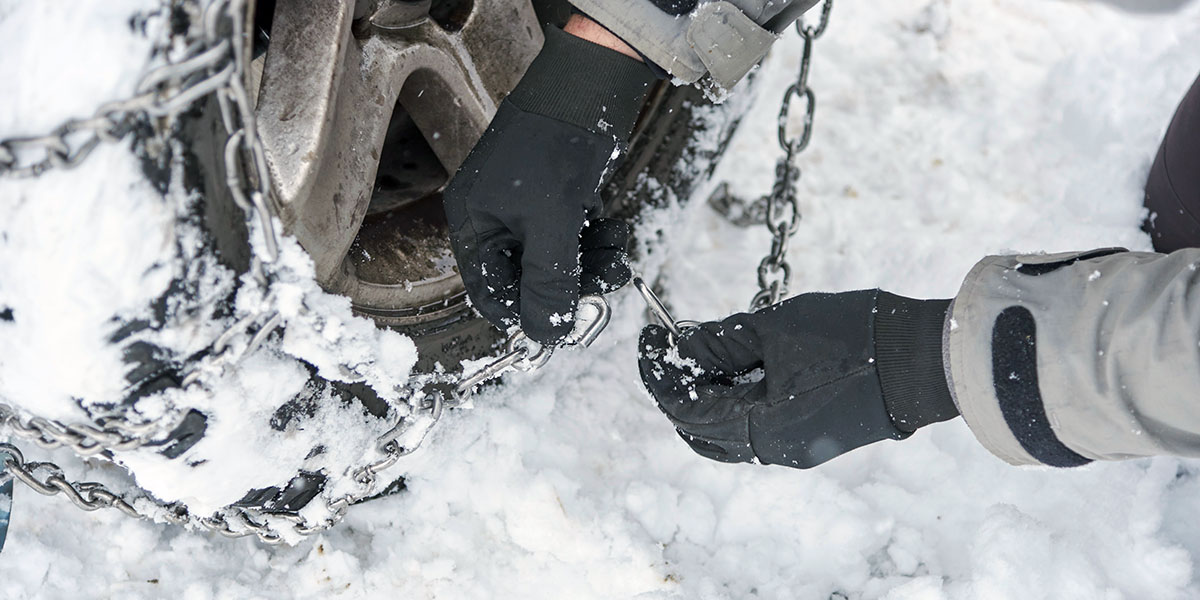




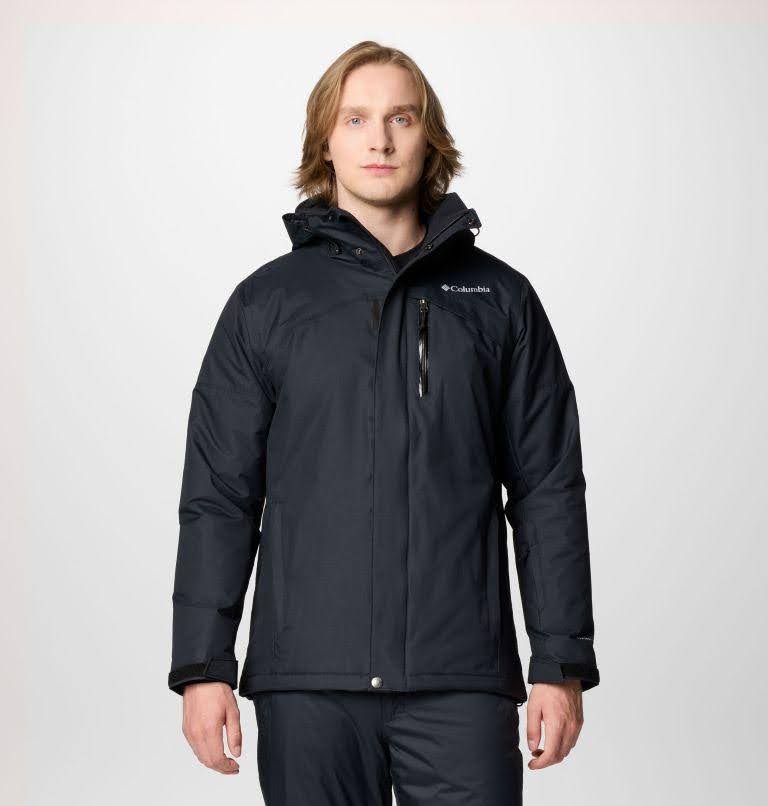
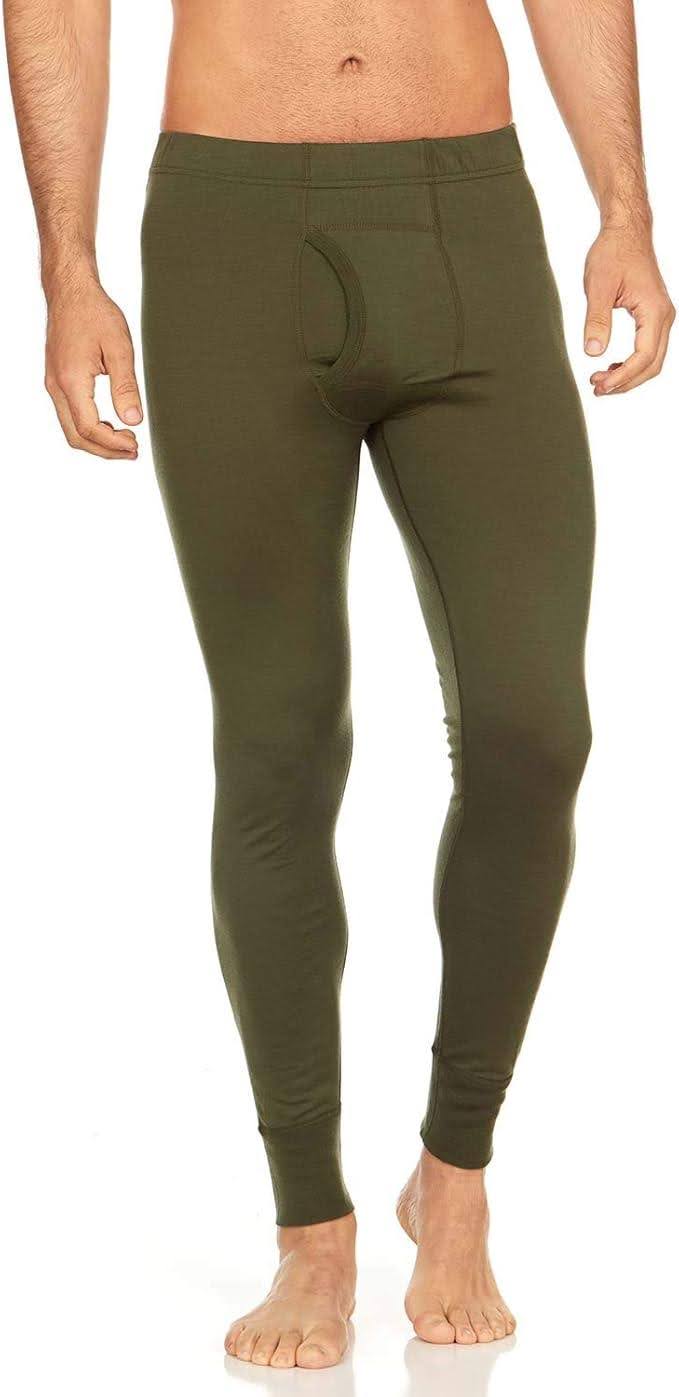
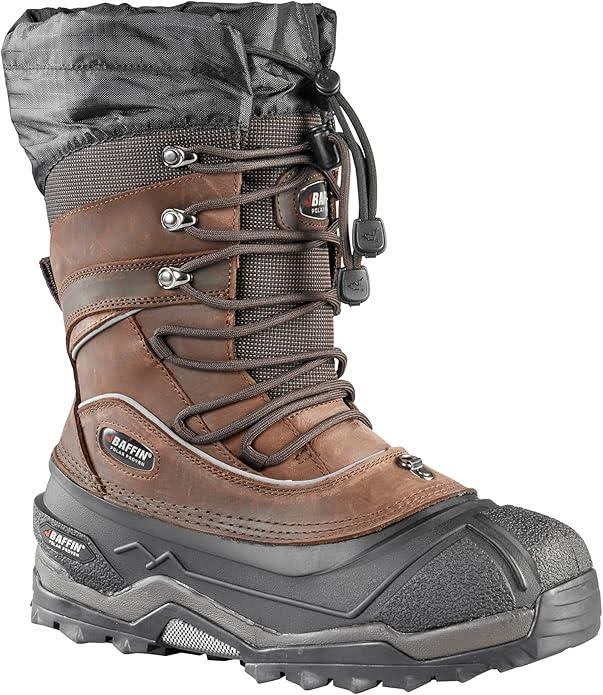
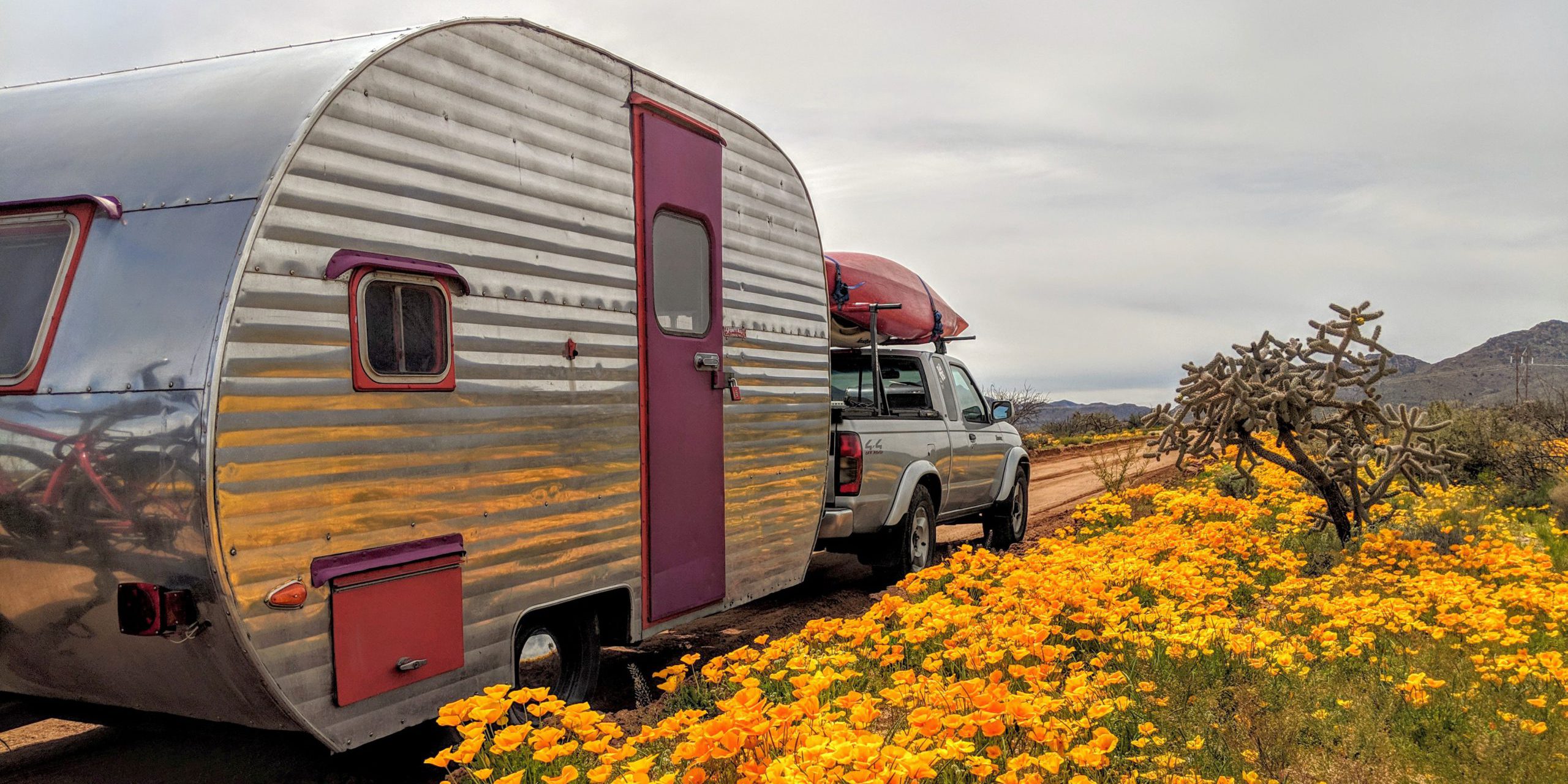
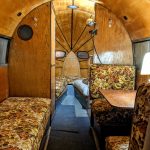
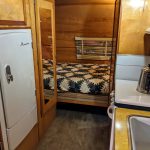
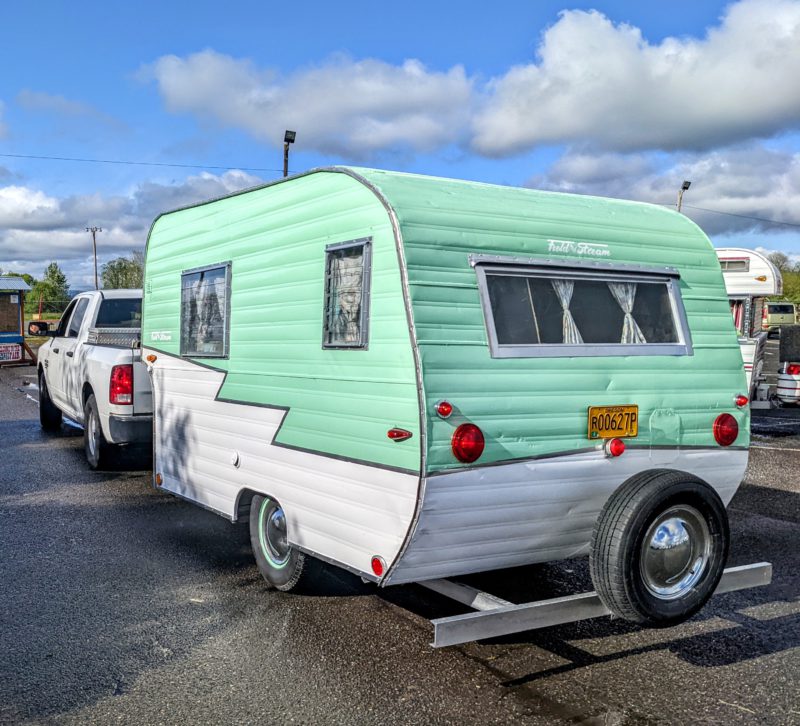
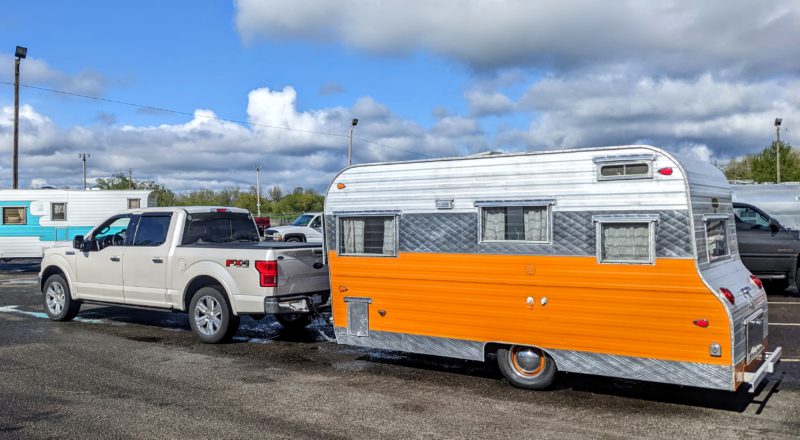
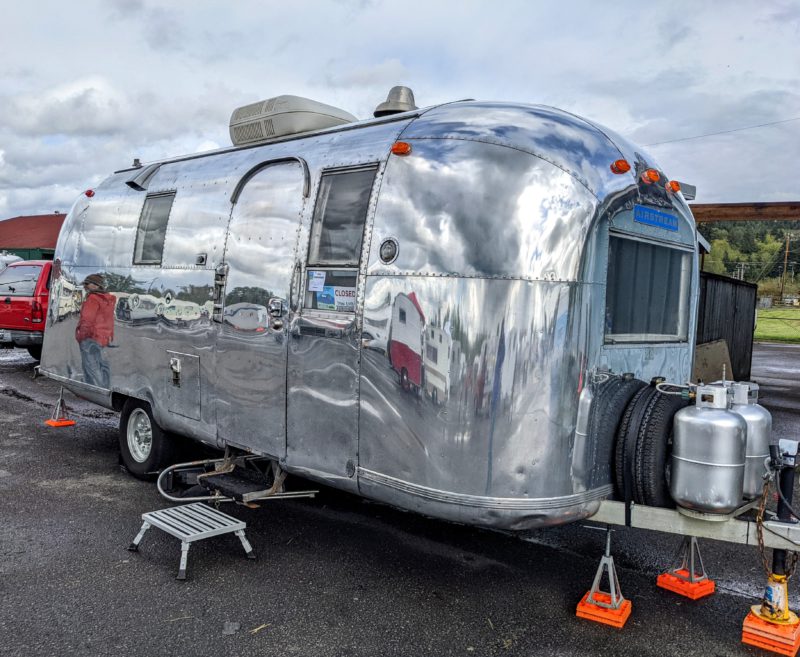
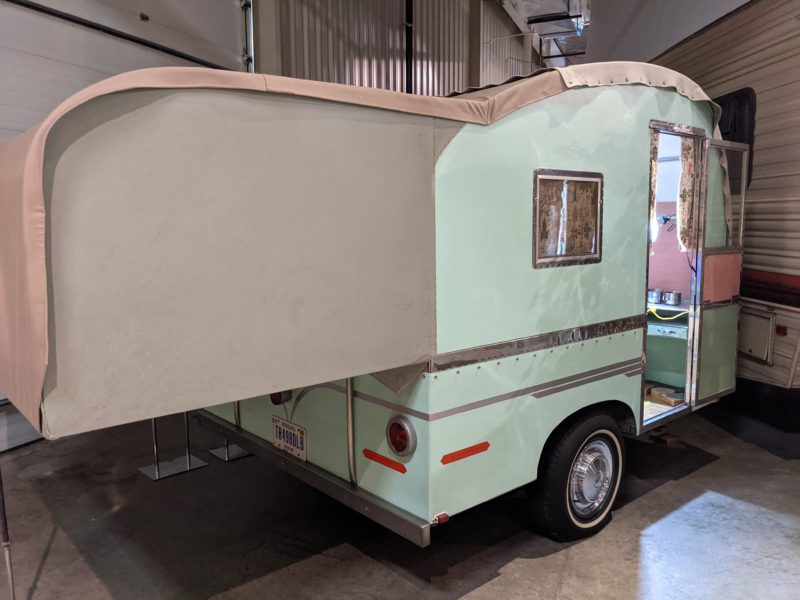


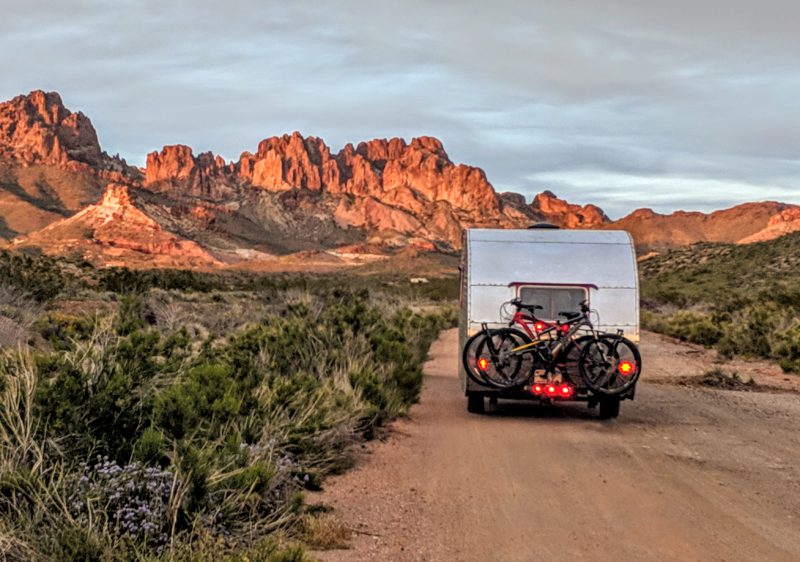

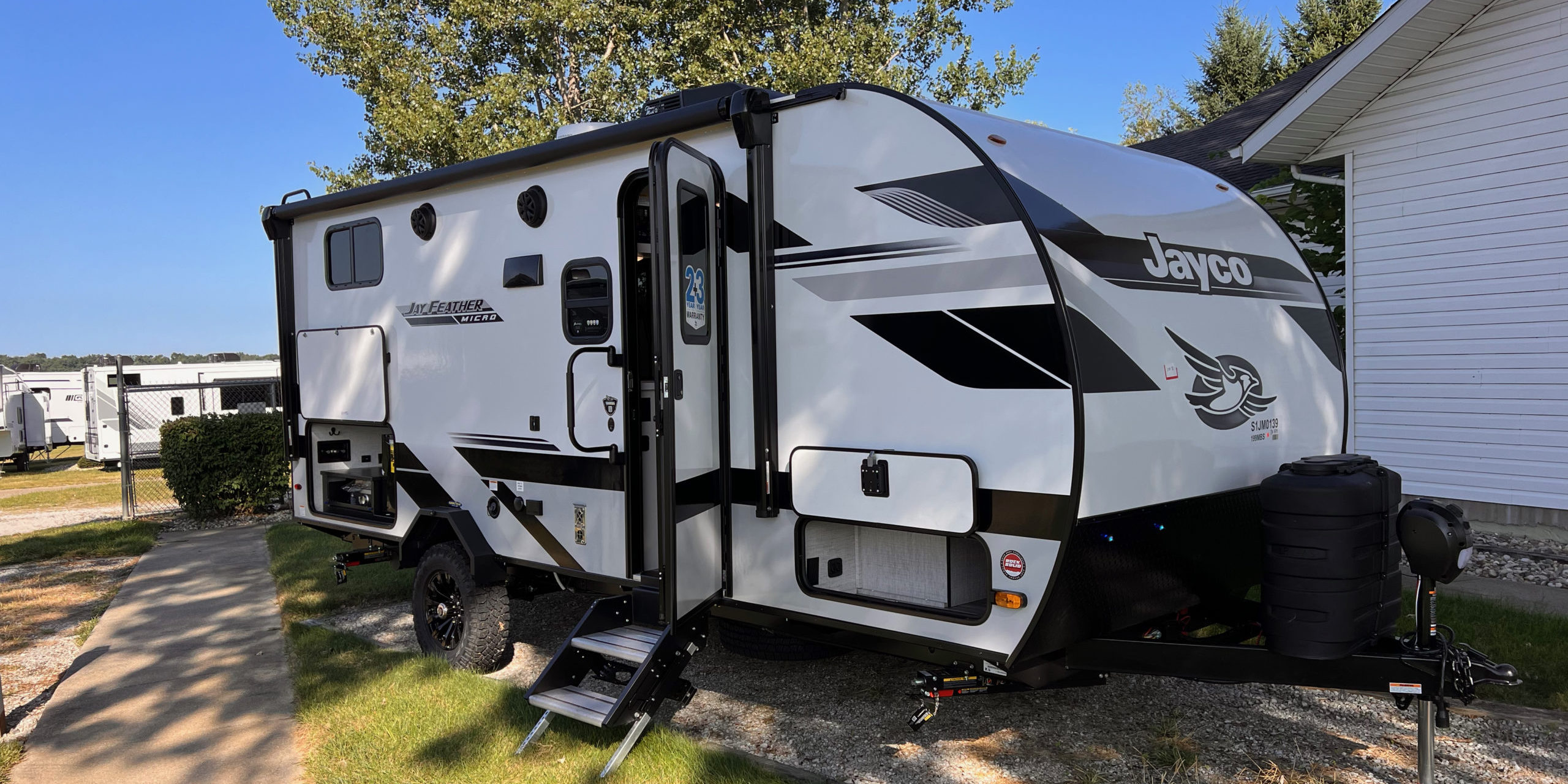
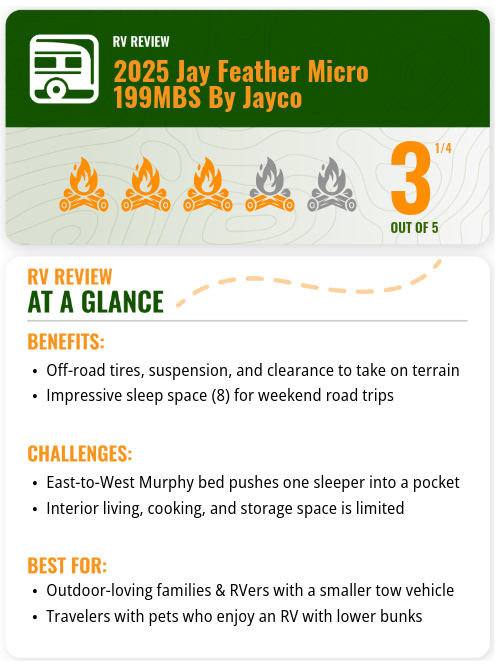 I rate the 2025 Jayco Jay Feather Micro 199MBS three and quarter out of five. One of the real surprises is that this little camper packs a lot of sleeping spots. Even so, some people really don’t like Murphy beds — and especially don’t like examples that head east to west. (Someone has to sleep in the corner.)
I rate the 2025 Jayco Jay Feather Micro 199MBS three and quarter out of five. One of the real surprises is that this little camper packs a lot of sleeping spots. Even so, some people really don’t like Murphy beds — and especially don’t like examples that head east to west. (Someone has to sleep in the corner.) 